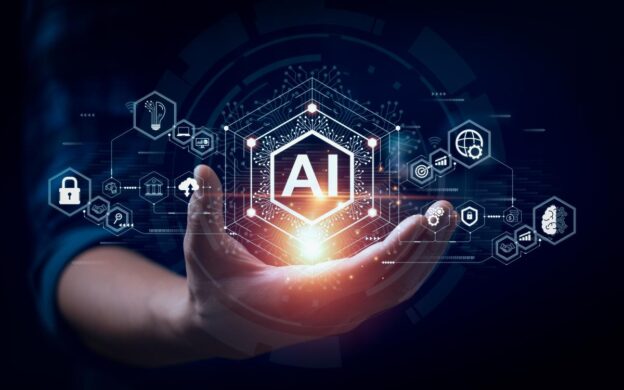By 2025, according to IDC, organizations will allocate over 40% of their core IT spend to AI-related initiatives, leading to a double-digit increase in the rate of product and process innovations.
Artificial intelligence is poised to reshape the IT industry and the way businesses operate. That new forecast comes from market intelligence firm IDC, which predicts that enterprise spending on generative AI (GenAI) from now through 2027 will be 13 times greater than the growth rate for overall worldwide IT spending.
IDC forecasts enterprise spending on GenAI services, software and infrastructure will grow from $16 billion in 2023 to $143 billion in 2027. Spending on generative AI over the four-year period to 2027 is expected to reach a compound annual growth rate (CAGR) of 73.3%.
Also: If AI is the future of your business, should the CIO be the one in control?
To help organizations better understand how to leverage GenAI technology for business success, IDC developed a new framework – the Generative AI Path to Impact – that explains key activities and elements along the path.

IDC
Before any of the core technologies of GenAI are explored, IDC believes that the following key activities need to be put in place:
- Establish a Responsible AI Policy: This must include defined principles around fairness, transparency, protections, and accountability relating to the data used to train models, as well as how the results are used. A responsible AI policy should also provide transparency on the roles and responsibilities of developers, users, and other stakeholders, while addressing legal and compliance issues.
- Build an AI Strategy and Road Map: A set of defined, measurable, and prioritized GenAI use cases is required to align the organization on the key areas that will deliver the maximum business impact in the short, medium, and long term.
- Design an Intelligence Architecture: Managing the life cycle and governance of data, models, and business context for every use case is critical. The architecture should also include protocols for data privacy, security, and intellectual property protection.
- Reskill and Train Staff: New competencies will be required to build and use GenAI models, such as prompt engineers to write and test prompts for GenAI systems. Every organization must create a new skills map for core AI technologies and business capabilities to deploy GenAI at scale across the organization. Organizations should also build personalized training programs for key roles.
The next step in defining the path to GenAI impact is prioritizing an identified set of use cases. IDC defines a use case as a business-funded initiative enabled by technology that delivers a measurable outcome. There are three broad types of GenAI use cases that need to be assessed:
- Industry: These involve more custom work and, in some cases, may require organizations to build their own GenAI models. Examples include generative drug discovery in life sciences and generative material design for manufacturing. Specialized use cases tend to be built around specific models and model providers, with custom integration architectures designed for individual clients.
- Business Function: These use cases typically involve integrating a model (or multiple models) with corporate data for use by specific departments or business functions, such as Marketing, Sales, and Procurement. Many organizations are already testing these types of use cases but are concerned about intellectual property leakage and data governance.
- Productivity: These use cases are aligned with work tasks, such as summarizing reports, creating job descriptions, or generating Java code. GenAI functionality for productivity improvement is being infused into existing applications, such as Microsoft 360 Copilot or Duet AI for Google. For many of these use cases, business value can be delivered through the content and data that the underlying foundation models have been pre-trained on.
IDC recommends adopting a “three horizons” framework to help organizations transform their business models using GenAI.
- Horizon 1 focuses on near-term, incremental innovation.
- Horizon 2 focuses on disruptive innovation in the medium term.
- Horizon 3 focuses on long-term business model transformation.
The framework drives alignment across all business domains and helps prioritize key initiatives.
https://www.zdnet.com/google-amp/article/how-ai-reshapes-the-it-industry-will-be-fast-and-dramatic/





